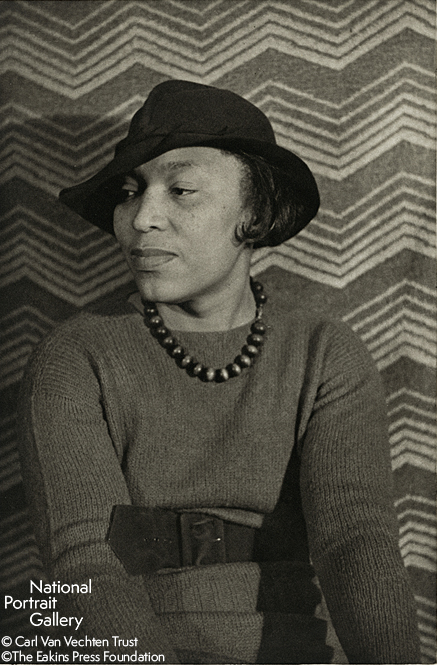Inventing Zora Neale Hurston: The Shape-Shifting Woman and Her Portraitist

Zora Neale Hurston came to New York in 1925 “with $1.50 in my pocket and a lot of hope.” Brimming with curiosity, intelligence and wit, she became an energizing force within the cultural movement known as the Harlem Renaissance. Her remarkably varied and productive career featured pioneering work as an anthropologist, folklorist, novelist, and playwright.
Socially, Hurston was renowned for her freewheeling sense of fun and her ability to spellbind audiences with tales of African American life in the rural South. “When Zora was there, she was the party,” the poet Sterling Brown later recalled. Acutely conscious of her own charm and sheltered from racial prejudice by her upbringing in the all-black community of Eatonville, Florida, Hurston brought a singular perspective to the problem of discrimination. “It does not make me angry,” she wrote. “It merely astonishes me. How can any deny themselves the pleasure of my company? It’s beyond me.”
A master of self-invention and reinvention, Hurston blithely retooled the facts of her biography to suit her sense of self. Though born on January 7, 1891 in Notsaluga, Alabama, she preferred to state her birthplace as Eatonville, where she had moved as a toddler, and she continued to shave ten years off her age as she had done since enrolling in public high school at the age of twenty-six.
Hurston’s instinctive blurring of fact and fiction became productive aspects of her professional life. Her investigation of African American culture merged objective observations made through “the spyglass of anthropology” with insights gained from personal experience. Her fieldwork, which included interviews with former slaves and their descendants, provided the basis for four novels, among them her most famous work, Their Eyes Were Watching God (1937).
On April 3, 1935, the writer-turned-photographer Carl Van Vechten created the photograph that has become Hurston’s most iconic portrait. Rather than the attention-seeking raconteur, Hurston appears as an introspective enigma. In place of the outlandish outfits she favored at parties (ranging from Norwegian ski-wear to the patchwork skirt of a Seminole Indian), she wears a simple knit dress and black hat. Turning her head to one side, she averts her downcast eyes from the photographer, exposing one side of her face to the light while the other recedes into shadow. Only the dynamic zig-zags of the bold backdrop hint at the electrifying energy that Hurston could deploy at will.
Van Vechten was one of Hurston’s closest friends, and he used words as well as images to convey the beguilingly contradictory personality that he knew so well. “Zora is picturesque, witty, electric, indiscreet, and unreliable,” he once wrote. “The latter quality offers material for discussion; the former qualities induce her friends to forgive and love her.” Hurston clearly appreciated Van Vechten’s forthright insights into her complex nature. Responding to a series of photographs he made of her in November 1934, she observed, “I love myself when I am laughing. And then again when I am looking mean and impressive.”
Having come to distrust the insincere motives of other white “friends of the Negro,” who cultivated the radical chic of interracial friendships “by being eternally complimentary,” Hurston appreciated the lack of flattery she perceived in her portraitist’s photography as well as his friendship. It was as a testament to their intimate relationship that she once stated with pride, “Carl Van Vechten has bawled me out more times than anyone else I know.”